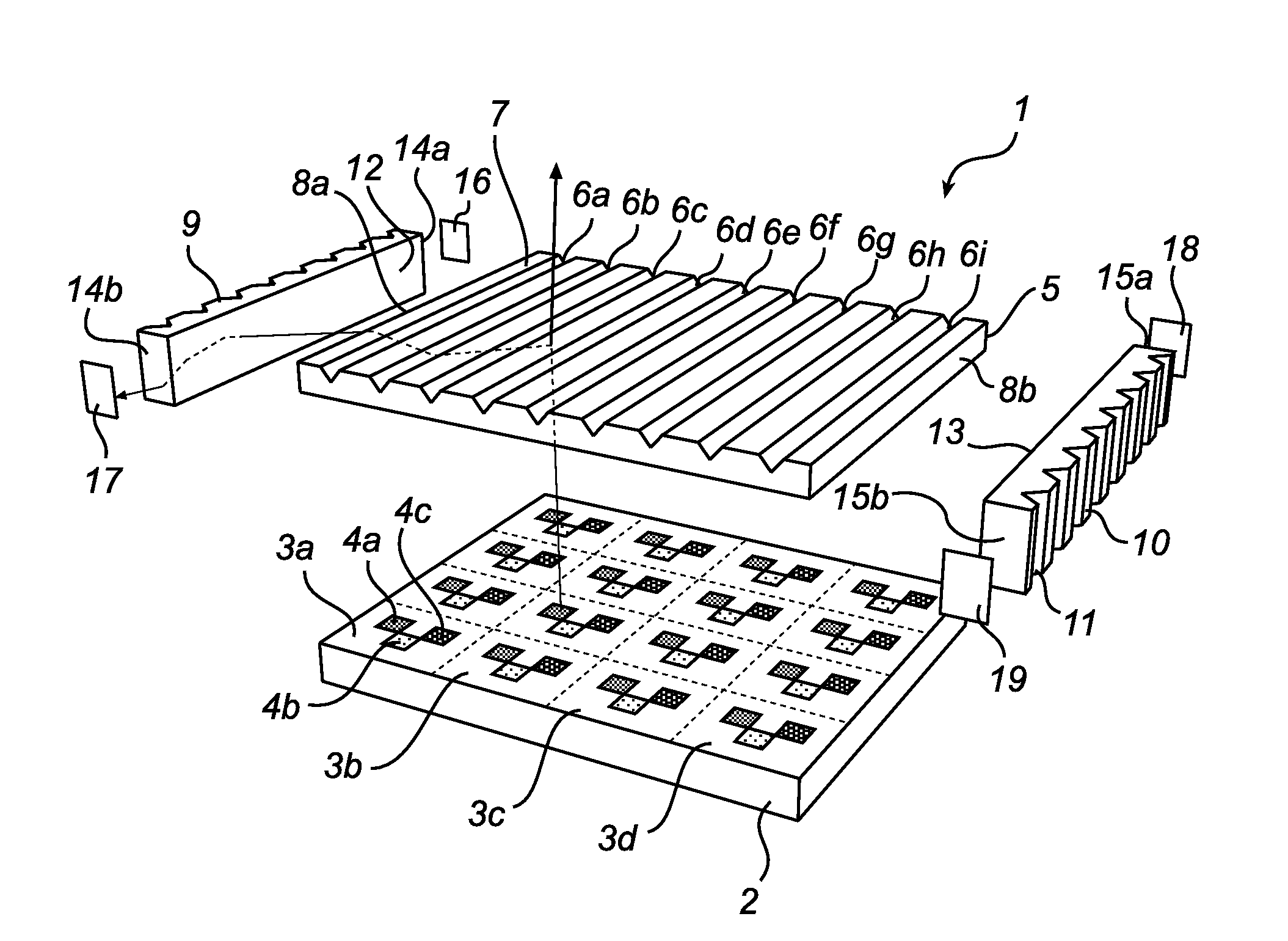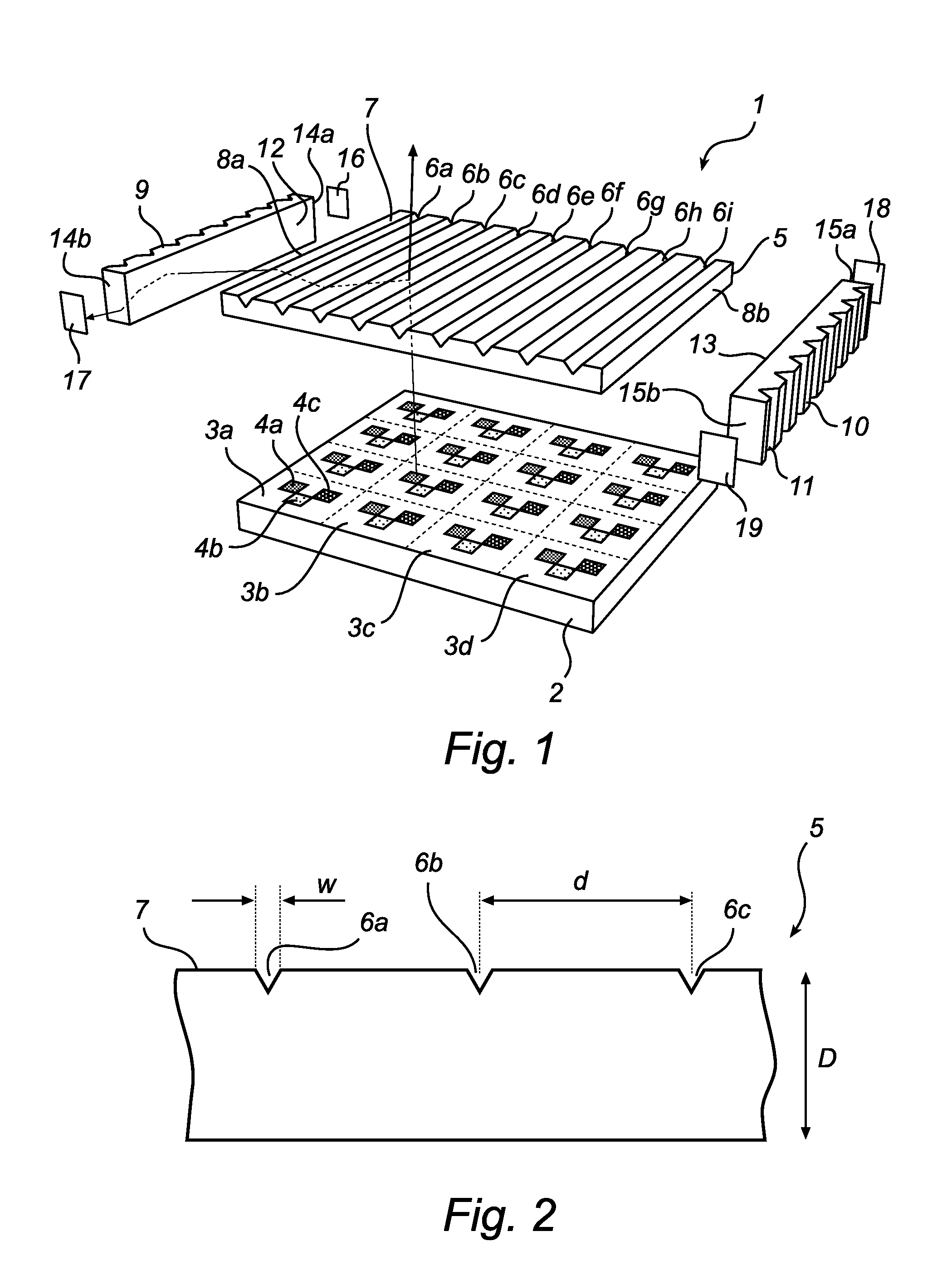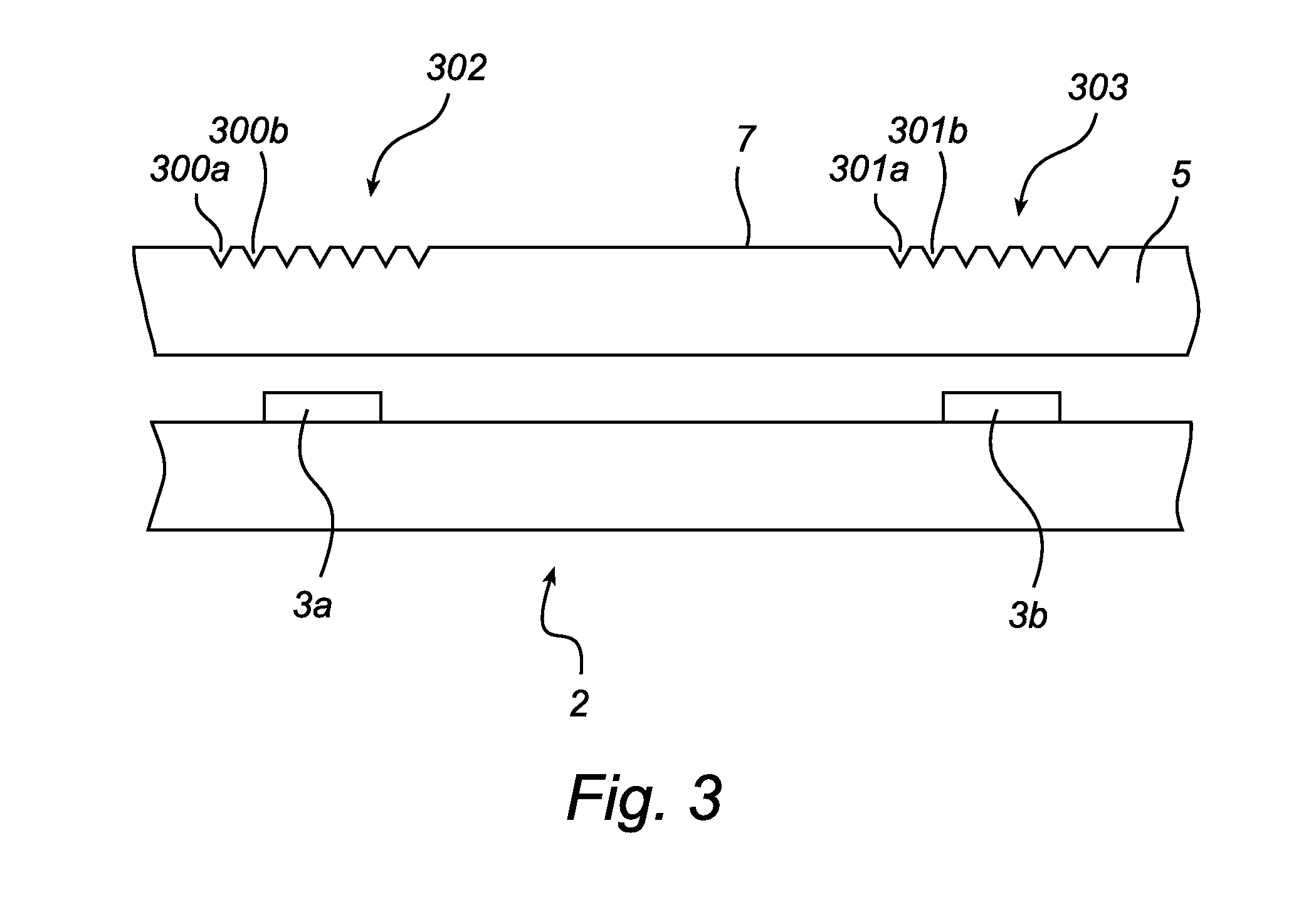Backlight system
a backlight system and control technology, applied in the field of backlight systems, can solve the problems of progressive degradation of the performance of the backlight, excessive waste of precious energy, and large spread of the luminous intensities of the light sources comprised in the backligh
- Summary
- Abstract
- Description
- Claims
- Application Information
AI Technical Summary
Benefits of technology
Problems solved by technology
Method used
Image
Examples
first embodiment
[0060]In FIG. 1, an exploded perspective view of the backlight system according to the present invention is schematically shown.
[0061]With reference to FIG. 1, the backlight system 1 has a backlight panel 2, which supports a plurality of individually controllable light-sources, here in the form of RGB-clusters 3a-d each including at least one of each of red, green and blue LEDs 4a-c. For the sake of clarity of drawing, only a few of the depicted RGB-clusters and RBG-LEDs are indicated by reference numerals. The backlight panel 2 is preferably provided in the form of a printed circuit board (PCB), or the like, having conductive traces connecting the light-sources 3a-d to a power supply (not shown), preferably via control circuitry (not shown) for enabling individual control of the individually controllable light-sources 3a-d. Although not indicated in FIG. 1, the RBG-clusters 3a-d may include a larger number of RGB-sub clusters, which are controllable as a group. The LEDs 4a-c is pre...
second embodiment
[0066]In FIG. 3, which is a section view of a portion of the backlight system according to the present invention, two adjacent light-sources 3a-b are provided on the backlight panel 2. On the top surface 7 of the outcoupling plate 5, outcoupling structures 300a-b and 301a-b are provided (for clarity of drawing, only two of the structures in each group of outcoupling structures are indicated by reference numerals). The outcoupling structures 300a-b and 301a-b are provided in groups 302 and 303 which are centered above each of the light-sources 3a and 3b, respectively. Between the two groups 302 and 303, no outcoupling structures are provided. Through the outcoupling plate configuration according to FIG. 3, the normal operation of the backlight system is disturbed as little as possible while still capturing and outcoupling a sufficiently large fraction of the emitted light to be able to measure the individual output of each of the light-sources 3a-b. Although no outcoupling structures...
PUM
 Login to View More
Login to View More Abstract
Description
Claims
Application Information
 Login to View More
Login to View More - R&D
- Intellectual Property
- Life Sciences
- Materials
- Tech Scout
- Unparalleled Data Quality
- Higher Quality Content
- 60% Fewer Hallucinations
Browse by: Latest US Patents, China's latest patents, Technical Efficacy Thesaurus, Application Domain, Technology Topic, Popular Technical Reports.
© 2025 PatSnap. All rights reserved.Legal|Privacy policy|Modern Slavery Act Transparency Statement|Sitemap|About US| Contact US: help@patsnap.com



